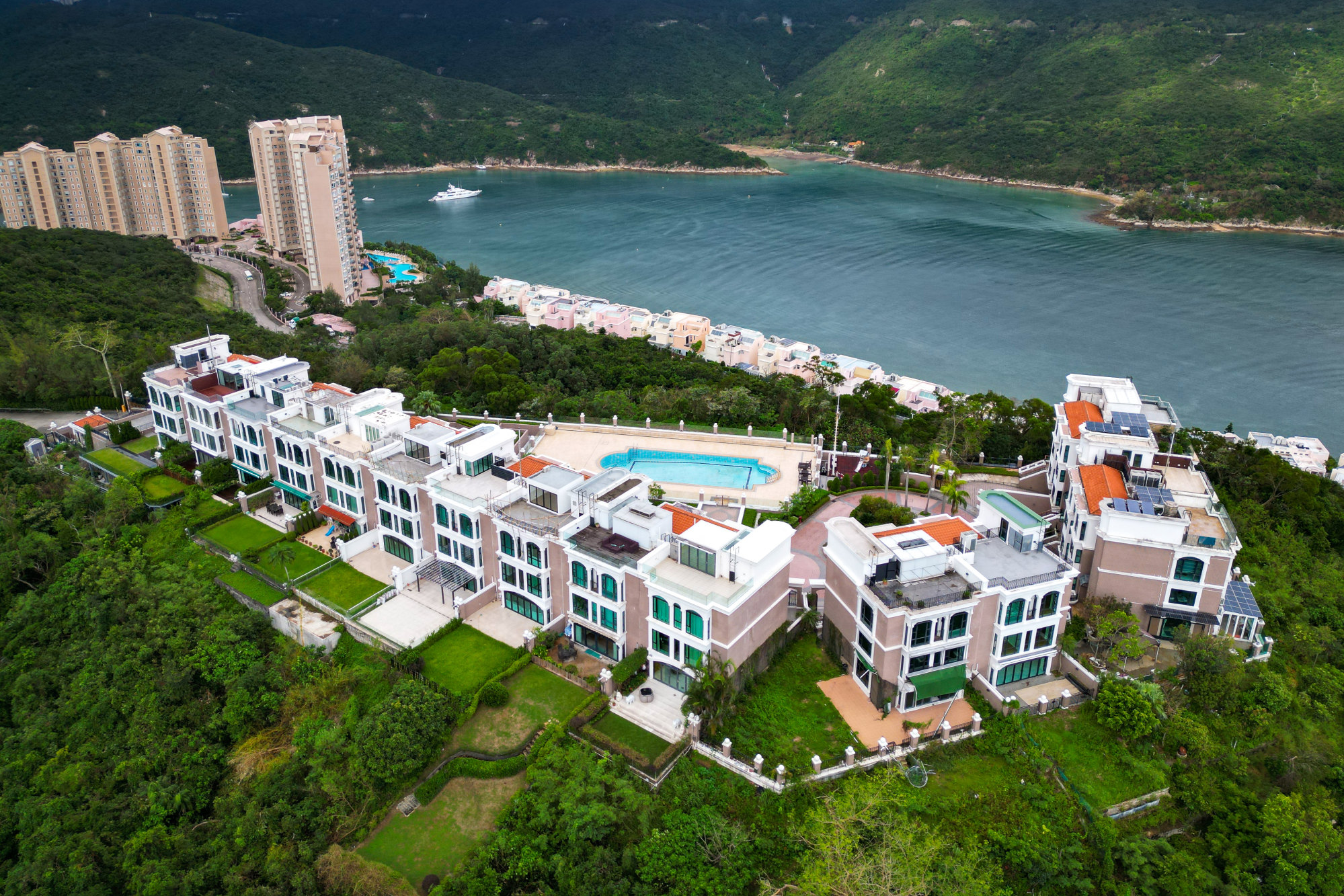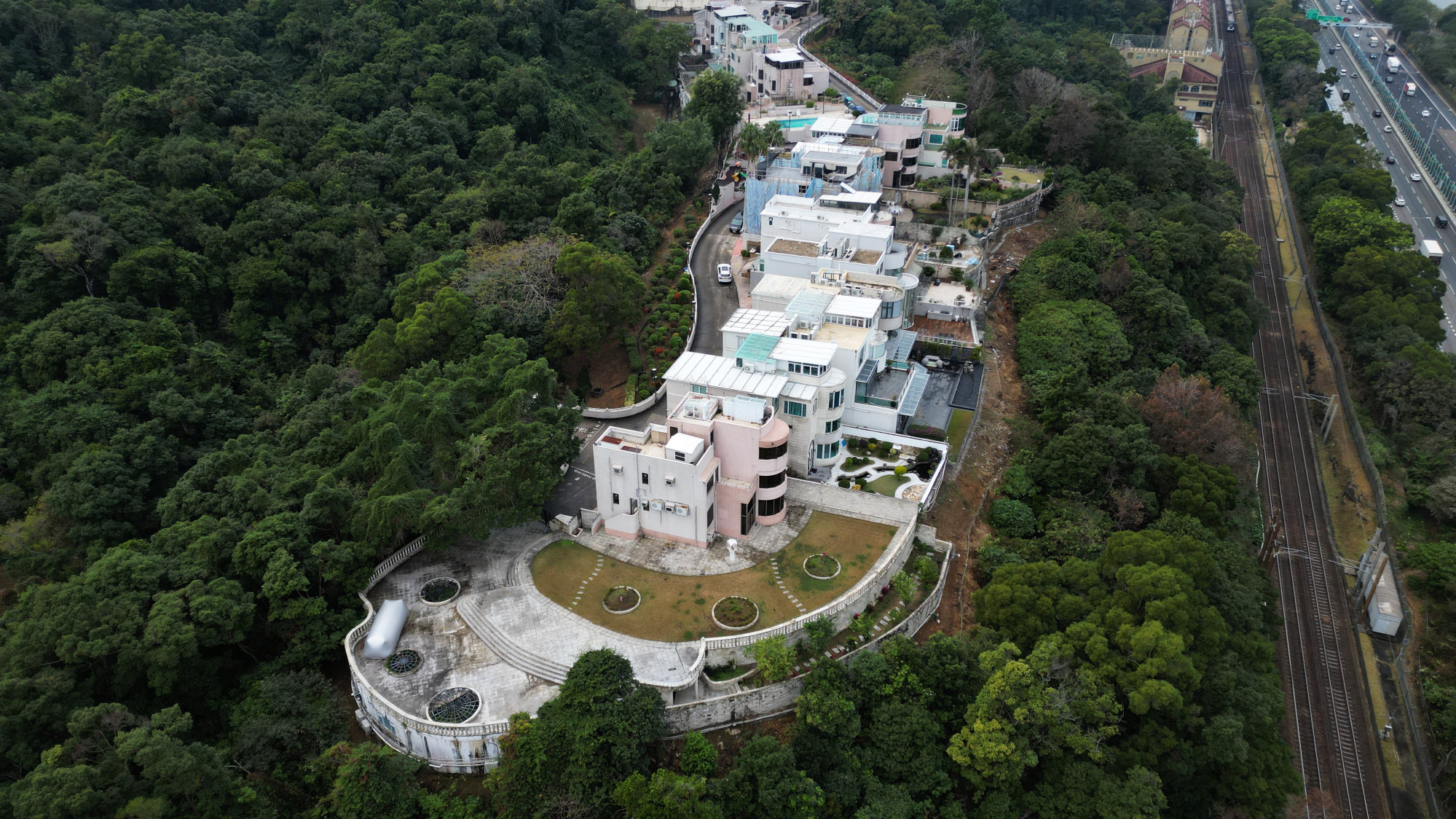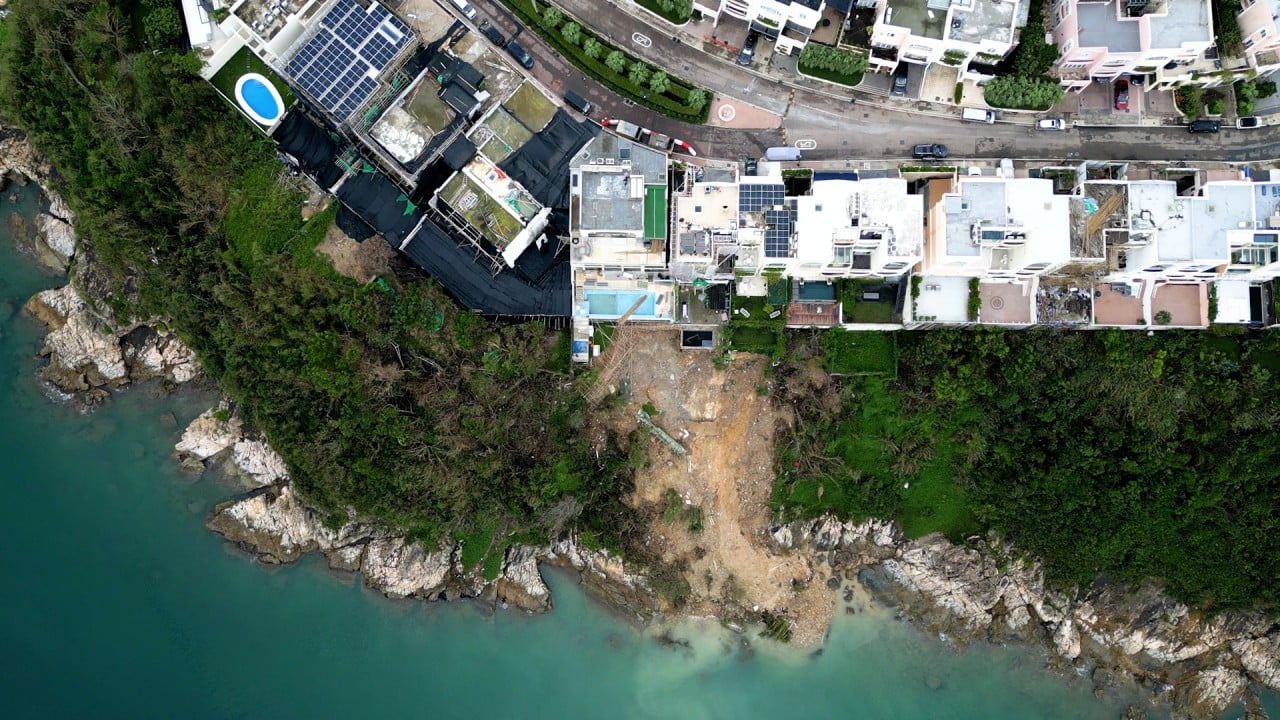
Exclusive | Can Hong Kong ever quash the problem of homeowners building unauthorised structures on their expensive properties?
- Having paid a high price for their property, some homeowners have every incentive to build unauthorised additions for their houses knowing enforcement can be lax
- One contractor walks Post reporter through process of adding unauthorised structure as part of government-approved solar panel installation
In Pan Chung Village, a grey-walled multi-clan enclave opposite the busy Tai Po Hui market, officers once discovered a four-storey house being built without official approval.
Under the dubbed small-house policy enacted during British colonial rule, adult male indigenous villagers are allowed to erect a house of up to 700 sq ft per floor on their own land within a recognised New Territories village without having to pay a land-use conversion fee. But each house can go up to three storeys only.
A four-storey house was therefore bound to raise eyebrows.
Exposing Hong Kong’s invisible land grab by owners of luxury homes
The Buildings Department immediately issued a removal order requiring the two co-owners to demolish the building. The pair ignored the letter, and went on to build another four-storey house next to the unauthorised property, again without seeking prior official permission.
They built the first house in 2009. It took another seven years before the law caught up with the two co-owners. In 2016, they were slapped with a suspended sentence of two months’ imprisonment and fined HK$149,400 (US$19,100), before being thrown behind bars the next year for their repeated snubbing of the removal orders.

One was jailed a second time for 12 weeks in 2019 as he was prosecuted for the sixth time over the case, while the other was placed on the wanted list after he failed to show up in court.
It was not until the seventh legal action mounted by building authorities that the court imposed a longer jail term of eight months on one of the co-owners in 2021, meting out the heaviest sentence so far for such cases.
Fifteen years after the first illegally built four-storey house went up, in 2024, both structures are still standing. Upon the Post’s inquiry, the Buildings Department said it was in the process of pursuing further prosecution actions against the pair.
It may seem an extreme example. But the case reveals how deep-rooted the problem is with unauthorised structures. They not only continue to exist but are even openly advertised on property sites as homeowners repeatedly ignore official warnings, or worse, are not even on the government’s radar despite their flagrant violation of building rules.
Apart from constructing village houses without approval, Hong Kong homeowners over the years have also been found to have added illegal structures – ranging from canopies, rooftop glass houses, enclosed balconies to secret basements – to their properties, fuelling concerns over both safety and fairness of policy implementation.
Unauthorised pools, tennis courts and even private piers created by owners of assorted luxury properties have been found on what was supposed to be government land, often for years.
The problem of unauthorised building structures in the city’s most exclusive neighbourhoods surfaced last September after a landslide triggered by unusually heavy rains revealed illegal additions in the luxury homes of Tai Tam’s Redhill Peninsula.
Authorities can sue owners only if they fail to comply with a removal order on their unauthorised structures.
The maximum penalty upon conviction is a fine of HK$200,000 and one year’s imprisonment, and a further fine of HK$20,000 for each day that the offence continues.
Analysts said the government’s sheer leniency as well as lax law enforcement were the key reasons behind its failure to eradicate the widespread problem of illegal structures in Hong Kong.
“The penalty is disproportionate to the benefits of unauthorised building works. Owners will already have enjoyed the benefits for many years when they receive the order,” surveyor turned lawmaker Tony Tse Wai-chuen said.
“Especially when the property market has been on a rising trend in the past decade, it generates a lot of value and owners only have to pay the construction fee [for the unauthorised extensions].”
Post uncovers extent of unauthorised structures at luxury Hong Kong estates
Toothless tigers
The Buildings Department does not maintain any public tally on its prosecutions over unauthorised structures, and only publishes those more serious cases in which fines slapped on the owners passed a certain undisclosed level.
A Post check of the available data over the past 11 years found that owners of at least 81 cases concerning unauthorised structures had faced criminal punishments in the courts since 2013.
Only two homeowners in these cases were put behind bars. Ten received suspended jail terms, and 17 were fined more than HK$100,000.
Three in five of those prosecuted were recalcitrants who had been taken to court previously. Apart from the Pan Chung Village case, there were at least two cases in which the owners had been prosecuted for the fifth and sixth time.
In one case, a homeowner was given a four-month suspended sentence when he was hauled to court for the sixth time for illegal site formation works to construct about 120 square metres of garden and five structures of about 55 square metres at a house in Tuen Mun. The owner continued to ignore the removal orders even after he had been fined about HK$350,000 in total at the courts earlier.

Brian Wong Shiu-hung, a member of the Liber Research Community, an NGO focusing on land issues, accused the government of being overly lenient over the past years, with the courts rarely handing down the maximum penalty to owners.
“The actual punishment is so insignificant that it fails to create a real deterrent effect,” Wong said. “[Owners of the luxury houses] have all the resources to deal with the law enforcement and the fine. HK$100,000 means nothing to them.”
Benny Chan Chak-bun, president of the Hong Kong Institute of Architects, also said owners lacked awareness of the rules because of the government’s failure to undertake robust legal action.
“We have the law. But it is useless if the government cannot show its determination to take strong enforcement action. This is the situation we have seen over the past few decades,” Chan said.
4 homeowners in Hong Kong luxury estate face court over illegal structures
Black sheep in the industry
Authorities then rolled out a registration scheme to regulate rather than order the immediate removal of unauthorised structures on village houses of less severe scale as officers were simply overwhelmed by the rampant abuse in the area.
Homeowners had to declare any illegal small-scale additions to the government before the end of 2012. They also had to hire registered professionals to check the structures every five years until authorities demanded their removal.
According to an audit report, only about 65 per cent of the 18,034 applications received in 2012 continued to file safety reports in the second five-year period.
Meanwhile, new unauthorised additions continued to mushroom despite the decade-long crackdown. Between 2012 and 2021, building authorities issued an average of about 60 removal orders every year to village houses under construction and another 202 to newly completed works.
An engineer, who spoke on condition of anonymity, said it remained very easy for homeowners to install tailor-made extra structures to their properties even in the absence of official approval as there were black sheep in the sector willing to assist them at the right price.
There was usually no black-and-white contract between the two parties, and some owners would also promise not to rat the professionals out if they were prosecuted, he said.

A search online by the Post found numerous construction companies promoting their services in building additions to houses, with at least two of them coaching our reporter on how to bypass government rules.
For example, they suggested how to take advantage of a government initiative which encourages village houses to install solar panels.
Hong Kong relaxing rules on illegal home structures not an amnesty: minister
Under the scheme, homeowners of such houses in the New Territories are allowed to install solar energy generation systems covering not more than half of a 700 sq ft roof and not higher than 2.5 metres.
According to the official guidelines, the space underneath the system should not be enclosed and the roof should also be cleared of all unauthorised building works before the panels are installed.
But a manager of a construction company specialising in rooftop structures, surnamed Cheung, told the Post reporter that one could actually enjoy a “legal addition” by installing glass walls to turn the area covered by the panel into an enclosed room, and even said they could help expand that confined space beyond the 350 sq ft limit.
He also claimed there were rarely any government officers paying field visits to check any irregularities, and all the homeowners caught by authorities needed to do was to take a picture of the rectified situation and send it to the department to close the file.
“We can use sliding doors and folding windows, so even if the Buildings Department spots it, we can remove them for you for photo taking and have them easily restored afterwards,” Cheung said, offering a HK$10,000 package for such temporary removal and reinstallation.
Hong Kong may lower prosecution threshold for illegal structures, raise fines
He also confided to the Post about his previous projects, claiming his company had helped install aluminium bars around a high-end house on Conduit Road in Mid-Levels to help “conceal the unauthorised structures” inside.
“There was also another client who built an extra room in his house in Sha Tin,” Cheung said. “He told me that he was only caught three years later and found it a bargain.”
The Buildings Department said by the end of 2022 that about 290 out of 700 related cases it had checked were not complying with the requirements for solar panel installation in these village houses, with removal orders issued to the owners.
Under the Buildings Ordinance, anyone who undertakes building works without having obtained approval from the government will face a maximum fine of HK$400,000 and two years’ jail upon conviction.

Vincent Ho Kui-yip, chairman of the building policy panel of the Hong Kong Institute of Surveyors, said this rule had a loophole. It requires direct evidence of the person involved.
“The government cannot prosecute the people who carried out the illegal works if they cannot identify the exact people, the exact guy who did it with evidence,” he said.
This makes it easy for homeowners to escape prosecution. All the government can do is issue a statutory removal order demanding the unauthorised structure be taken away within 60 days in general and owners will only be sued if they fail to comply with the order.
“The court will need time to arrange the hearings, arrange the proceedings. So it would take one year in the past and some cases have dragged on for years,” Ho said.

Nipping it in the bud
Development minister Bernadette Linn Hon-ho also hinted at entrusting officers with the power to prosecute upon the discovery of illegal structures, stopping owners from using excuses to dodge their responsibility and setting different penalties based on the severity of the cases.
Kevin Tang, chairman of the Hong Kong Institution of Engineers’ Structural Division, said he hoped the government could just request all homeowners to declare if they had unauthorised structures and have authorities conduct random checks.

Lawmaker Tony Tse urged the government to step up inspection by conducting drone surveys and incorporating data from different departments, adding that the fine should also be associated with the rental profit generated by the illegal add-ons.
“The penalty can be one or two times the rental profit or half of it. It will be up to the government to decide. Or else, the deterrent effect will not be enough,” he said.
Such a move to discourage owners from engaging in such malpractices would help nip the problem in the bud, he said.
“As long as the owners are not doing it and are afraid of doing it, other relevant parties will refrain from pursuing these businesses,” he said.
As architects and engineers normally refrain from participating in unauthorised building works due to the risk of losing their licence, architect Chan suggested expanding the registration mechanism to interior designers and renovation workers as well.

Surveyor Vincent Ho suggested imposing a fixed penalty system upon the discovery of an unauthorised structure in which owners could face regular and prohibitive fines if they did not remove the unauthorised parts, to ease the burden on the officers and prosecutors going after them.
Ho added the government could also make it a rule that all property purchase transactions require a declaration on whether the home complied with its building plans.
“They can help the government to eradicate all those unauthorised works from the sources,” he said, noting that the government could hardly spot the unauthorised works inside a home.
“It’s a long-term plan to cure this unauthorised building works.”







